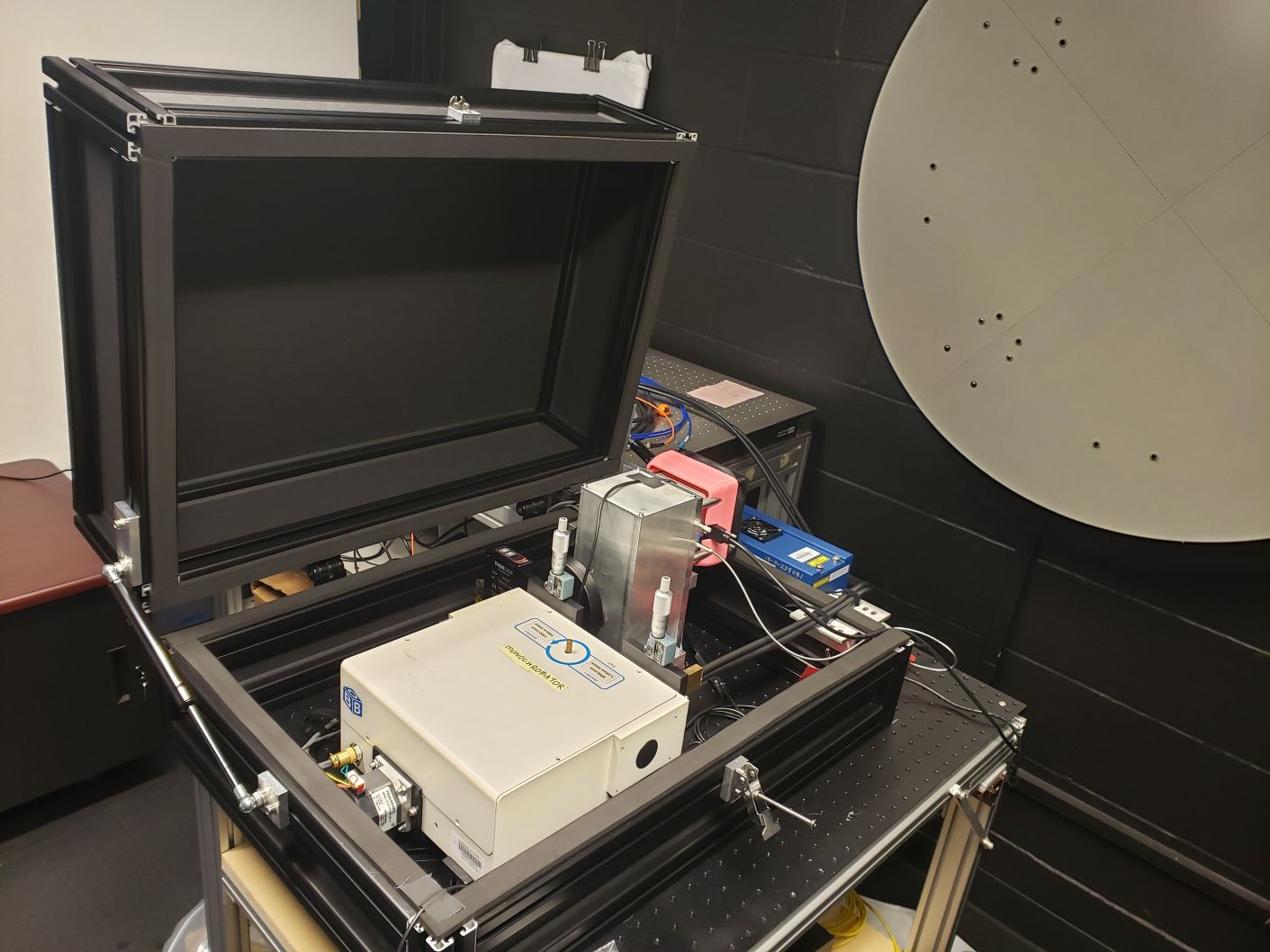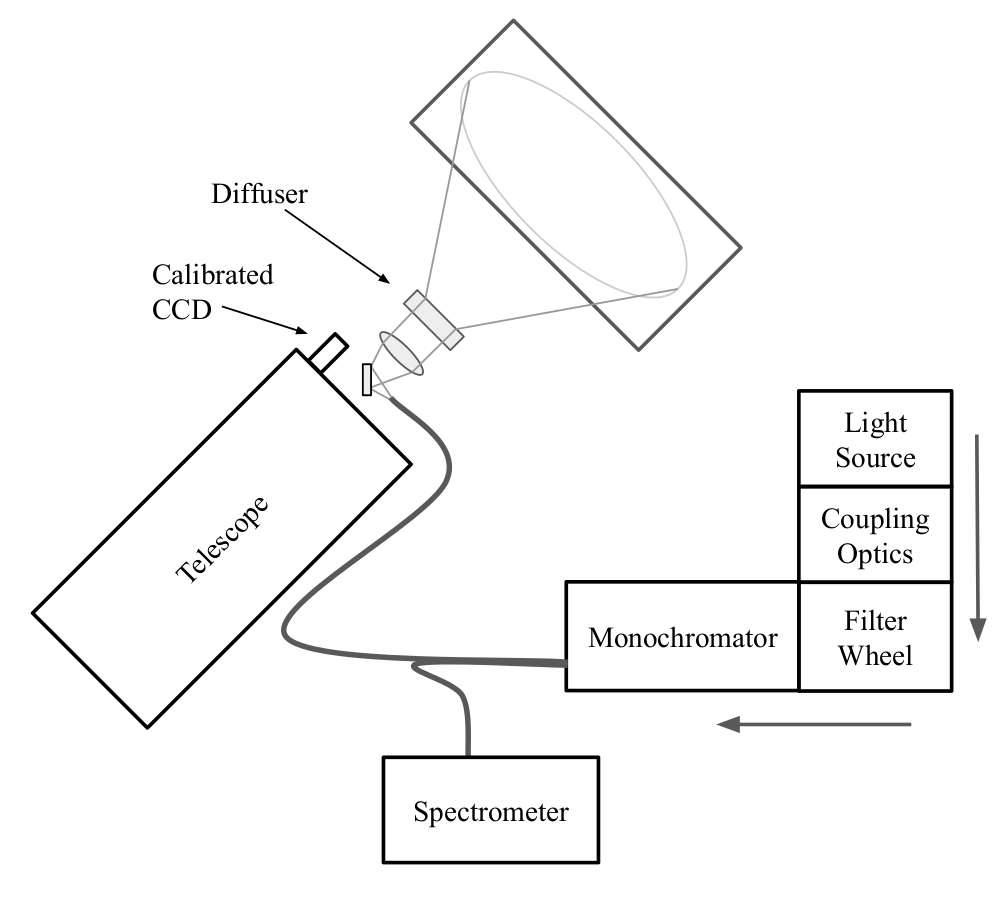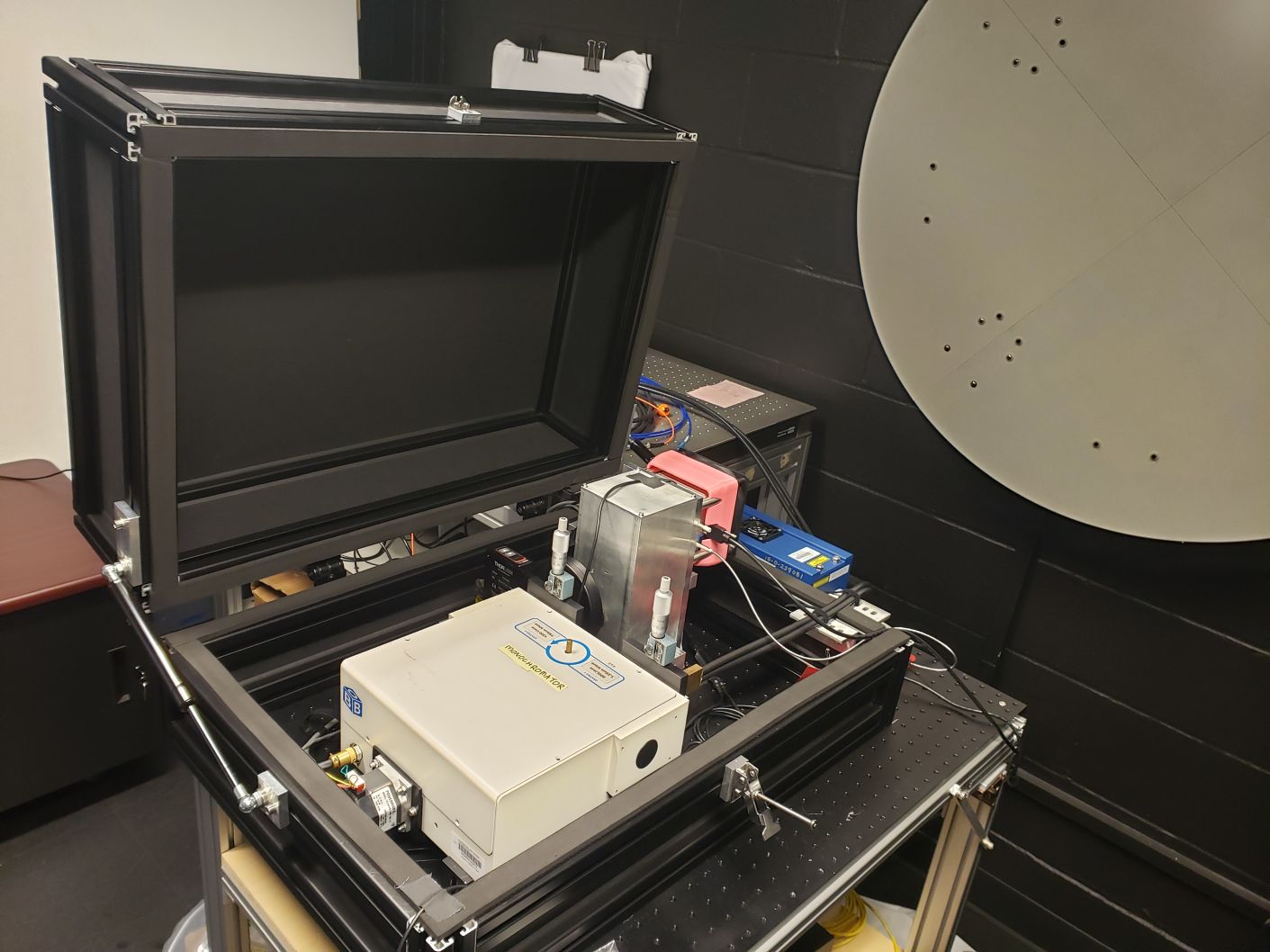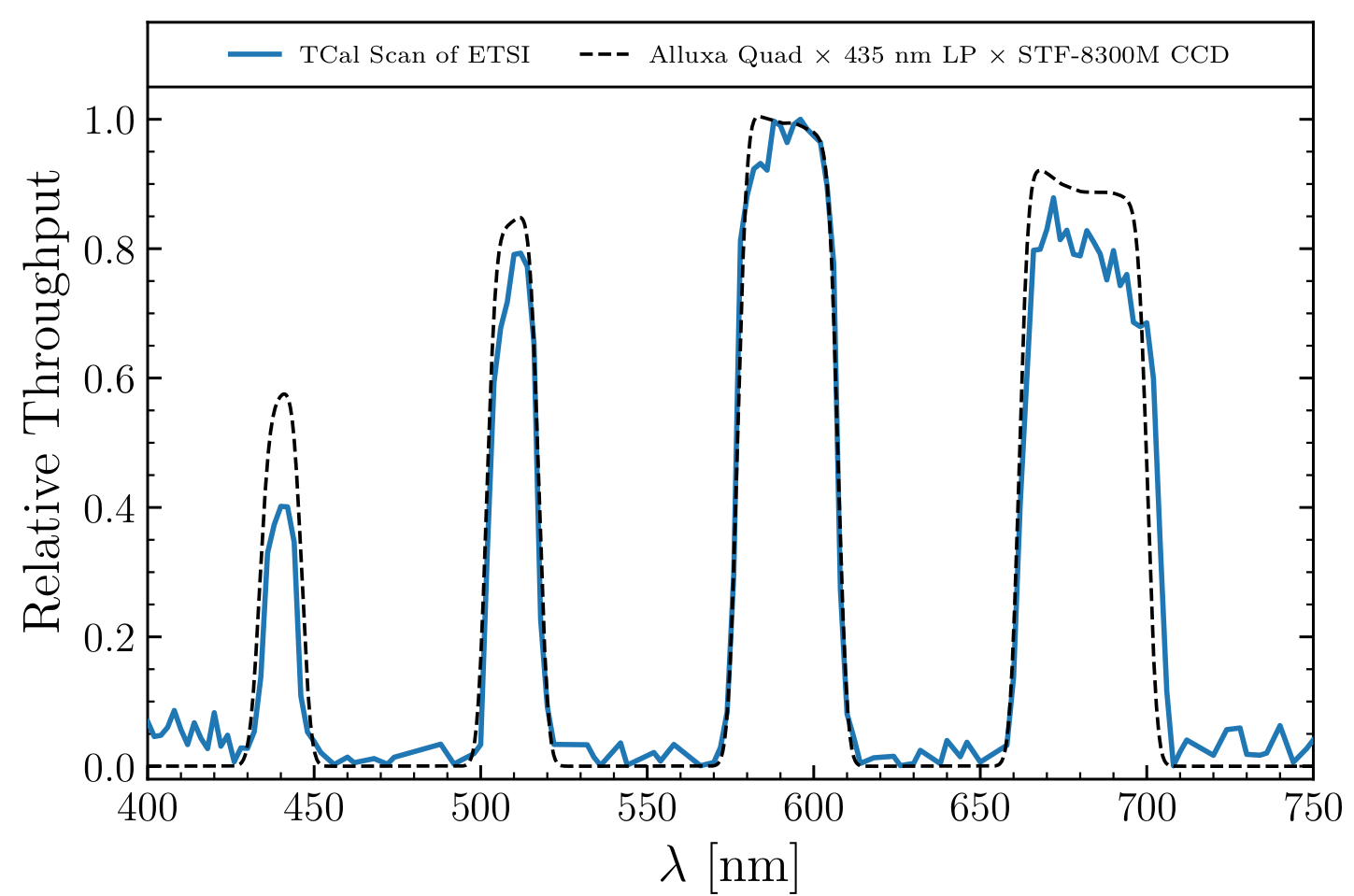TCal

Graduate student project: Peter Ferguson
The Traveling Calibration unit (TCal) is a mobile spectrophotometric calibration system that characterizes the throughput as a function of wavelength of imaging systems at observatories around the world. TCal augments and improves the science return of large scale surveys by calibrating telescopes and instrument systems that plan to do a significant amount of survey followup and placing them on a common photometric baseline. This is done by using a tunable light source and calibrated detector to measure a system's relative response as a function of wavelengh from 300nm to 1000nm. Characterizing the throughput of these astronomical imaging systems reduces the systematic error introduced when combining measurements made with different telescopes and systems.
System Overview
The TCal system consists of a few main components: a tunable light source, a projection system, a monitor CCD, and LabVIEW control software. Monochomatic light is projected onto a screen and observed by a lab-calibrated monitor CCD along with the instrument to be calibrated. The ratio of these measurements is used to derive the relative throughput of an instrument as a funciton of wavelength.

Tunable Light Source
To create the tunable light source, broadband light is generated from an Energetiq EQ-99X LDLS (laser driven light source). This source provides strong emission from 170 nm to 1700 nm. This light is fed through a F108w filter wheel that is controlled by the software and contains shortpass and longpass filters used to prevent out of band light in the output of the monochromator (eg. order-blocker filters). Finally the light is injected into an f/4 Czerny-Turner type monochromator that is used to select a ~2 nm bandpass to project.

Projection
We place a custom fiber bundle at the ouput of the monochromator. One fiber, from the bundle of 10, illuminates a monitoring spectrometer that gives us real time information on the output bandpass. The rest of the fibers are used to illuminate the flat field screen. This is done by collimating the output of the fiber bundle and placing an Engineered Diffuser (EDC) between the collimating lens and screen. The material for the flat field screen is chosen to be highly reflective and Lambertian over the spectral range we are calibrating. We use a nylon-spandex mix from https://stretchyscreens.com/. For more information check out our white and black materials testing.
Monitor CCD
An SBIG 8300M CCD is used as the monitoring detector. This CCD has been calibrated using a NIST calibrated photodiode, and it works better than the photodiode in the low signal to noise regime.

Software
The Labview scan software and data reduction notebooks as well as a list of the other required software and drivers can be found at https://github.com/psferguson/TCal
ETSI Scan
In the summer of 2019 TCal was taken along with a prototype of ETSI (pETSI) to the 0.9m telescope at McDonald Observatory. As part of the testing of pETSI, we scanned the mounted system using TCal. The results of this scan are shown below as a blue line. We were able to make a measurement of the relative tranmission of the system with ~1 % accuracy. The dashed black line shows the predicted transmission calculated from lab measurements of an Alluxa quad band filter, 435 nm long pass filter, and STF 8300M CCD quantum efficiency curve.

Publications
Further development and testing of TCal: a mobile spectrophotometric calibration unit for astronomical imaging systems
P. S. Ferguson, L. Barba, D. L. DePoy, L. M. Schmidt, J. L. Marshall, T. Prochaska, L. Bush, J. Mason, M. Sauseda, Proc. SPIE 11447, Ground-based and Airborne Instrumentation for Astronomy VIII, 114475U (13 December 2020); https://doi.org/10.1117/12.2562736
(PDF) (Poster)
Development of TCal: a mobile spectrophotometric calibration unit for astronomical imaging systems
Ferguson, Peter; DePoy, Darren L.; Schmidt, Luke; Marshall, Jennifer L.; Prochaska, Travis; Freeman, Daniel; Gardner, Lawrence; Gutierrez, Isaac; Kim, Doyeon; Kunnummal, Zeeshan; Sauseda, Marcus; Sharp, Hugh; and Torregosa, Michael. In Proc. SPIE, 10702–119, 2018.
(PDF) (Poster)
The software used for tcal can be found on the TCal github repo.
